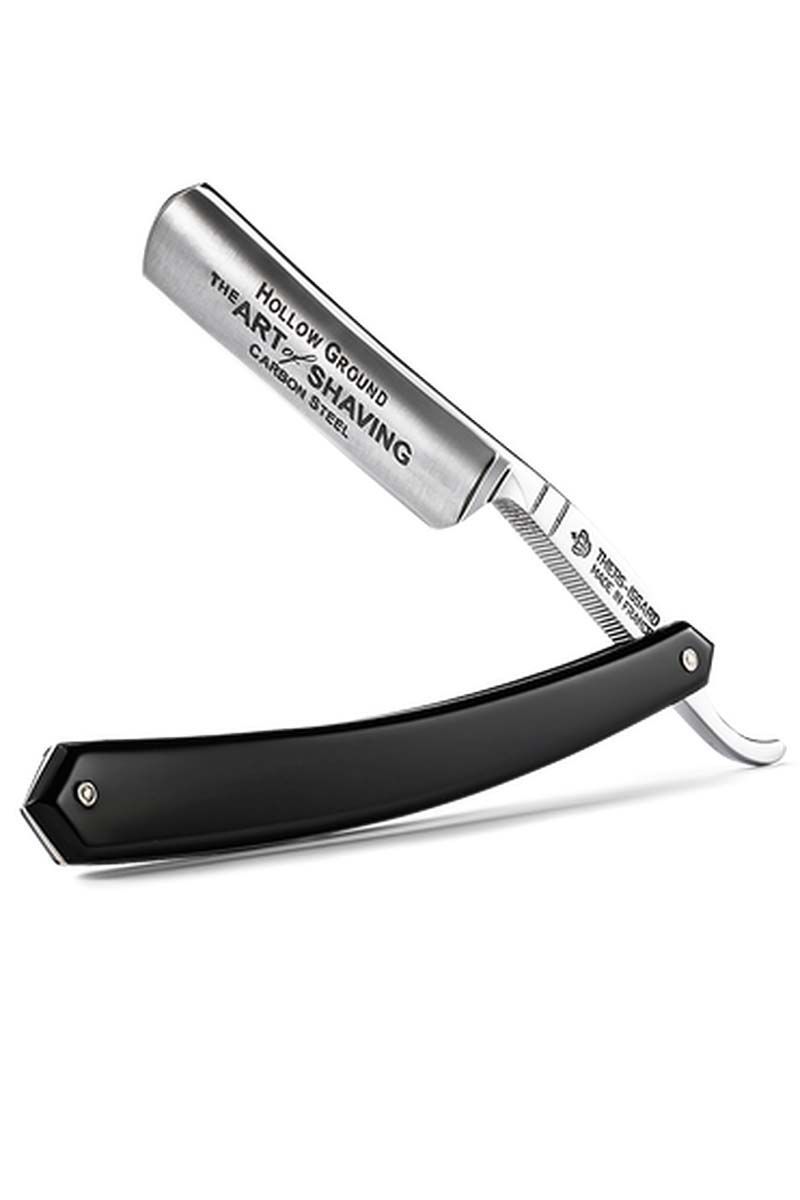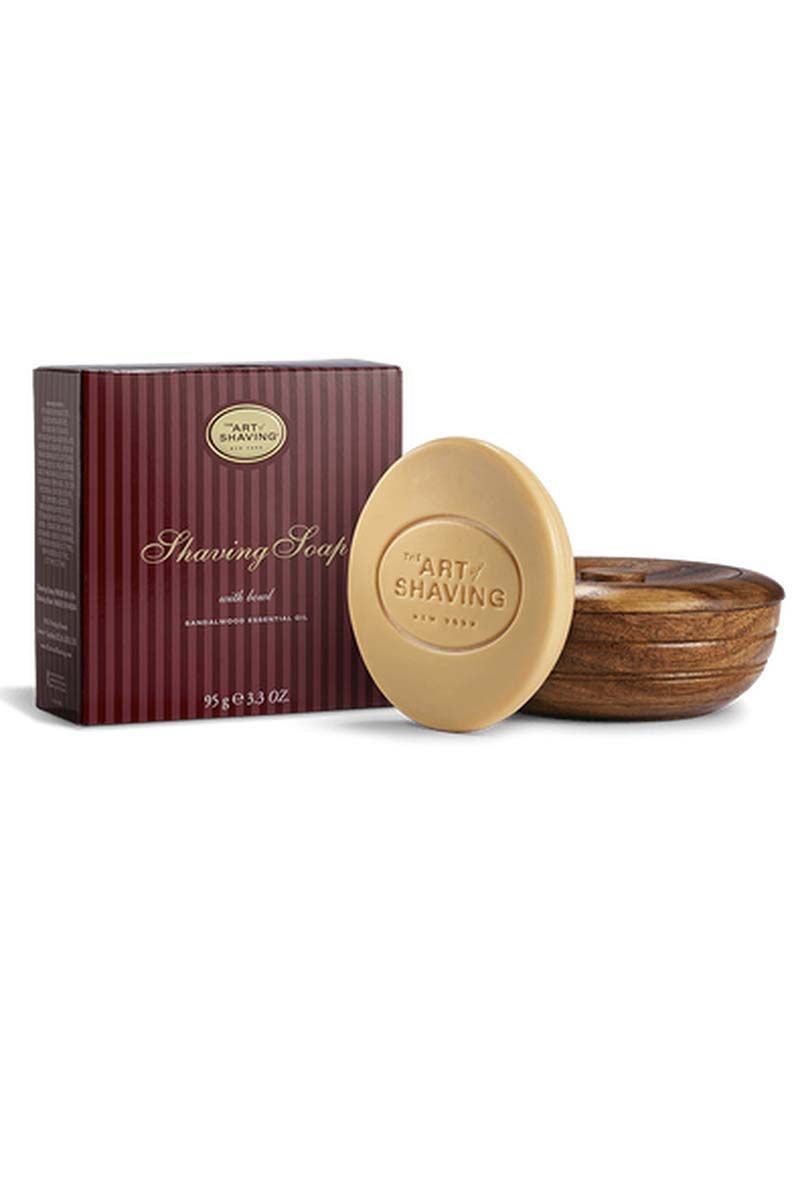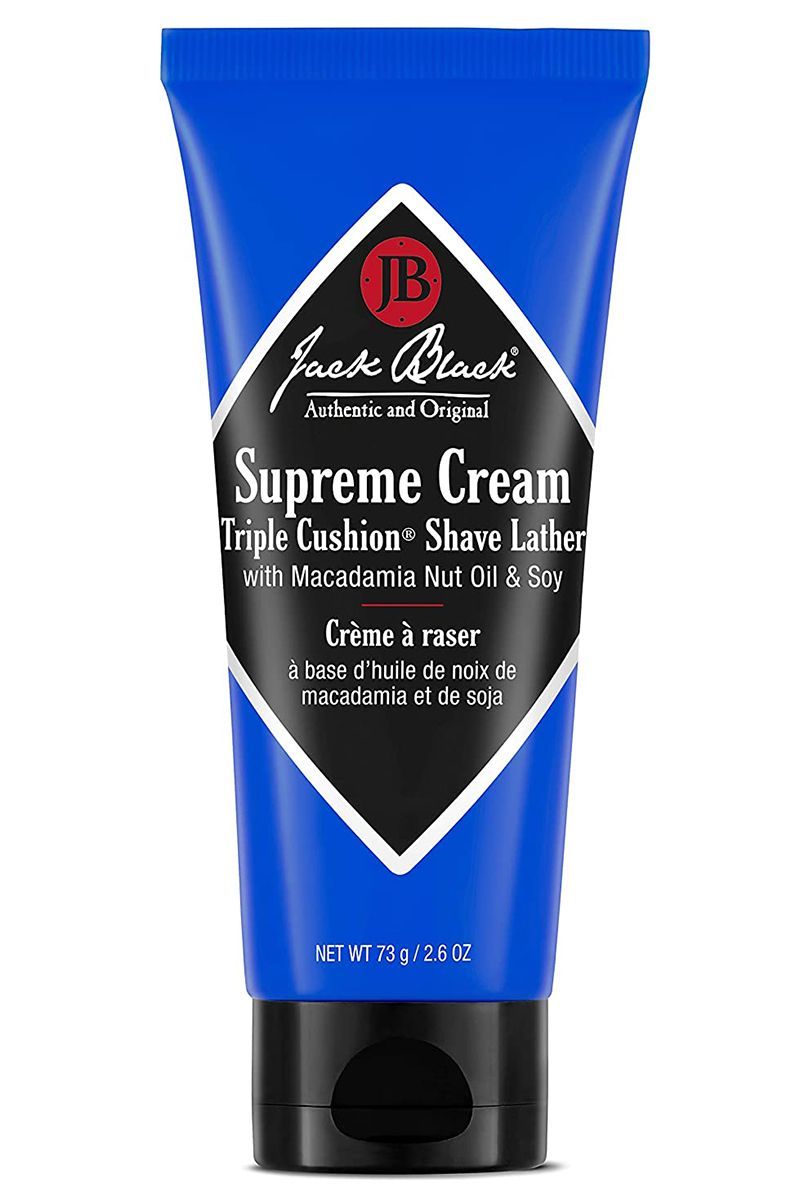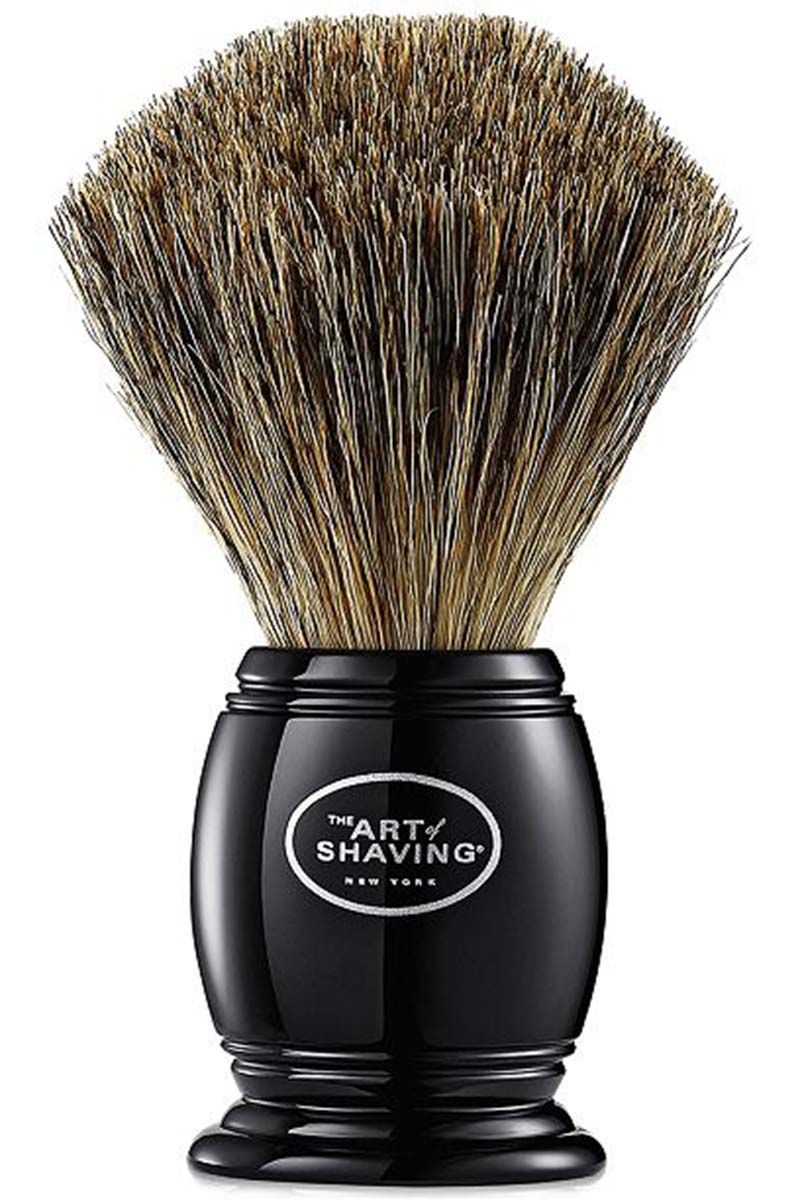How to Shave with a Straight Razor Like a Pro
I feel like James Bond.
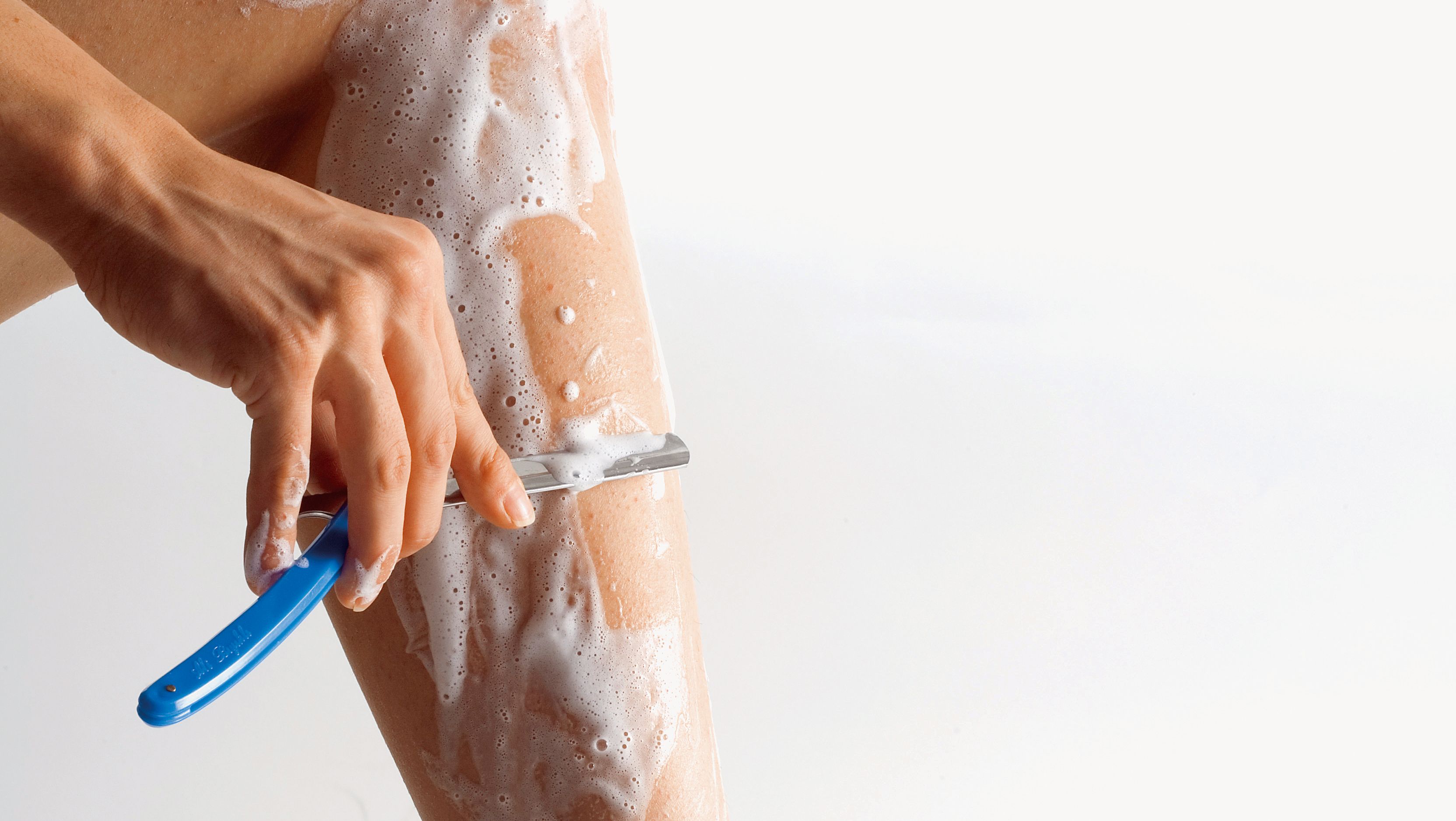

Remember that scene in Skyfall when the gorgeous Moneypenny shaves James Bond's face with a straight razor? It's the height of sexy: He's totally powerless and she's maneuvering a sharp blade around his neck. Plus, he ends up with a very smooth shave. Since then, the idea of shaving with a straight razor has always been in the back of my mind as something I want to try, albeit on my legs rather than my face.
Enter my boyfriend, who steadfastly refuses to shave with anything other than a straight razor. For the past few years, I've seen him achieve a ridiculously close shave and smooth jawline every few days in the mirror (alas, he won't let me do it for him). Then, one night, during a quarantine-induced fugue state of online shopping, I pulled the trigger: I bought myself a straight razor. The next day, I dutifully shaved from my ankles to my bikini line with it.
Let me tell you: it's a game-changer. Not only did I remove any trace of hair from my legs, but I get the sense that any dead skin was also scraped off, leaving me with possibly the smoothest shave I've ever achieved. If you're bored of spending money on razor blades, want to shave more sustainably, or are just interested in behaving like James Bond would, here is everything you need to know about how to shave with a straight razor.
The Benefits
There's a reason why straight razors have persisted throughout history. For one thing, a straight razor shave gives you more control than a standard bladed razor. If you have a hard time maneuvering around the knees, or want to just remove small areas of hair–like, say, the bikini line–then a straight razor is perfect for you.
Secondly, straight razors are a great option for people with sensitive skin who are prone to ingrown hairs and razor burn. They are also surprisingly safer for those of us who nick our skin frequently, when used properly. This one was a surprise to me; I was wholeheartedly expecting to cut myself a few times when shaving. But even when shaving over scabbed scratches (courtesy of my new kitten) I didn't cut myself once.
Lastly, straight razors have a significantly lower impact on the environment than traditional razors. There are no disposable parts in straight razor shaving, which means you're creating less waste.
The Equipment
When I first looked into purchasing myself a straight razor, I'll admit that I was unhappy with the prices I saw online. The good ones—and there really is a hierarchy—cost upwards of $100. My standard razor costs about $10, and I wasn't entirely willing to spend 10 times more than that to achieve similar results. However, unwilling to let go of my James Bond-induced dreams, I came to the conclusion that over the years, I've probably spent that amount or more replacing my razor and buying new razor blades.
Get exclusive access to fashion and beauty trends, hot-off-the-press celebrity news, and more.
My advice: Just add it to your cart and purchase. I beg of you, please don't skimp on a cheap straight razor. These babies are supposed to be incredibly sharp and last a lifetime. A cheap razor won't hold up well, and the blade could be too dull to shave safely.
You'll also need shaving cream. Traditionally, a shaving brush and soap are used together to create a thick lather that is easy to shave with. While not strictly necessary, I would recommend going the full nine yards and purchasing these additional items. Shaving soap not only makes shaving easier, but it lasts for years so you don't have to re-purchase for a long, long time. Most shaving soaps come in a refillable container, so the environmental impact is pretty low. While I love using these products, I've also shaved with a foamy shaving cream with similar results. The only thing I absolutely urge you not to use is non-foaming body wash. You want a thick lather so you can shave safely.
The Shave
Because I wanted to shave my legs, not my face, I had a hard time tracking down a YouTube tutorial that suited my needs. I eventually tracked down this video that gave me all the info I wanted to know:
First, I prepped my skin by placing a towel soaked in hot water on my legs. When the towel felt lukewarm, I lathered on my shaving soap with my brush. An important note: After some time, the soap on your legs will start to dry. It's important to re-up the lather before you get to that area.
In terms of positioning, I felt the most comfortable facing my bathroom mirror with my leg perched on the sink. That way, I could see my calfs when shaving them, and also behind my thigh when I got to that area. Was I being a bit of a contortionist? Yes. Find a position that feels comfortable to you, then work with your level of mobility and flexibility. In the video I watched, she was sitting down. My way just felt more natural to me.
The trickiest bit, of course, is learning how to position your razor so you don't cut yourself. Watching videos and the seeing straight razor shaving in movies gave me the general idea. Here is what I did: I opened the razor into a V shape against my leg, and held it from inside the V. I then titled it so the blade was almost parallel to my leg. If you angle the blade into your skin, surprise, you will nick yourself. After a few tries, I found the angle that worked naturally. I definitely recommend going super slowly and doing a few test runs somewhere away from prominent veins before going in. Eventually, you'll find a rhythm that suits you.
After a few runs with the razor, wipe off shaving cream and removed hairs on a nearby towel so the blade remains clean. When you've removed all the hair you want to, rinse off the area with warm water, dry it, and apply the lotion or body oil of your choice.
Shop These Shaving Essentials
The Maintenance
While straight razors are built to last forever, they require upkeep to stay in pristine condition. After shaving, it's important to clean and treat the blade immediately. I recommend carefully wiping off any shaving soap, drying the blade completely, then rubbing a small amount of jojoba oil on it. Since straight razor blades are made of steel, they will oxidize if not properly cared for. A good cleaning and regular oil treatments will keep your blade in the best shape. It's best to store your razor in a dry room—not the bathroom—so moisture in the air doesn't negatively impact the blade.
Secondly, every few months, the blade will need to be sharpened. This can be done at home, in a similar manner to sharpening kitchen knives. Most shaving companies sell razor strops, which are strips of leather that can sharpen blades easily and effectively. Lastly, if you choose to use a shaving brush to apply soap, it should be cleaned and dried after every use. You can buy a brush stand for easy storage that will double as a nice sink-side ornament.
Does this all seem like a lot of work? Maybe. But in my opinion, the benefits for my skin and the environment (not to mention my wallet) all add up. I've branched out from shaving my legs to shaving my underarms with a straight razor, and I'm loving the results. There is a learning curve with straight razor shaving. But sometimes a tried-and-true method beats out innovation. To quote my girl Moneypenny, "Old dog, new tricks."
RELATED STORIES
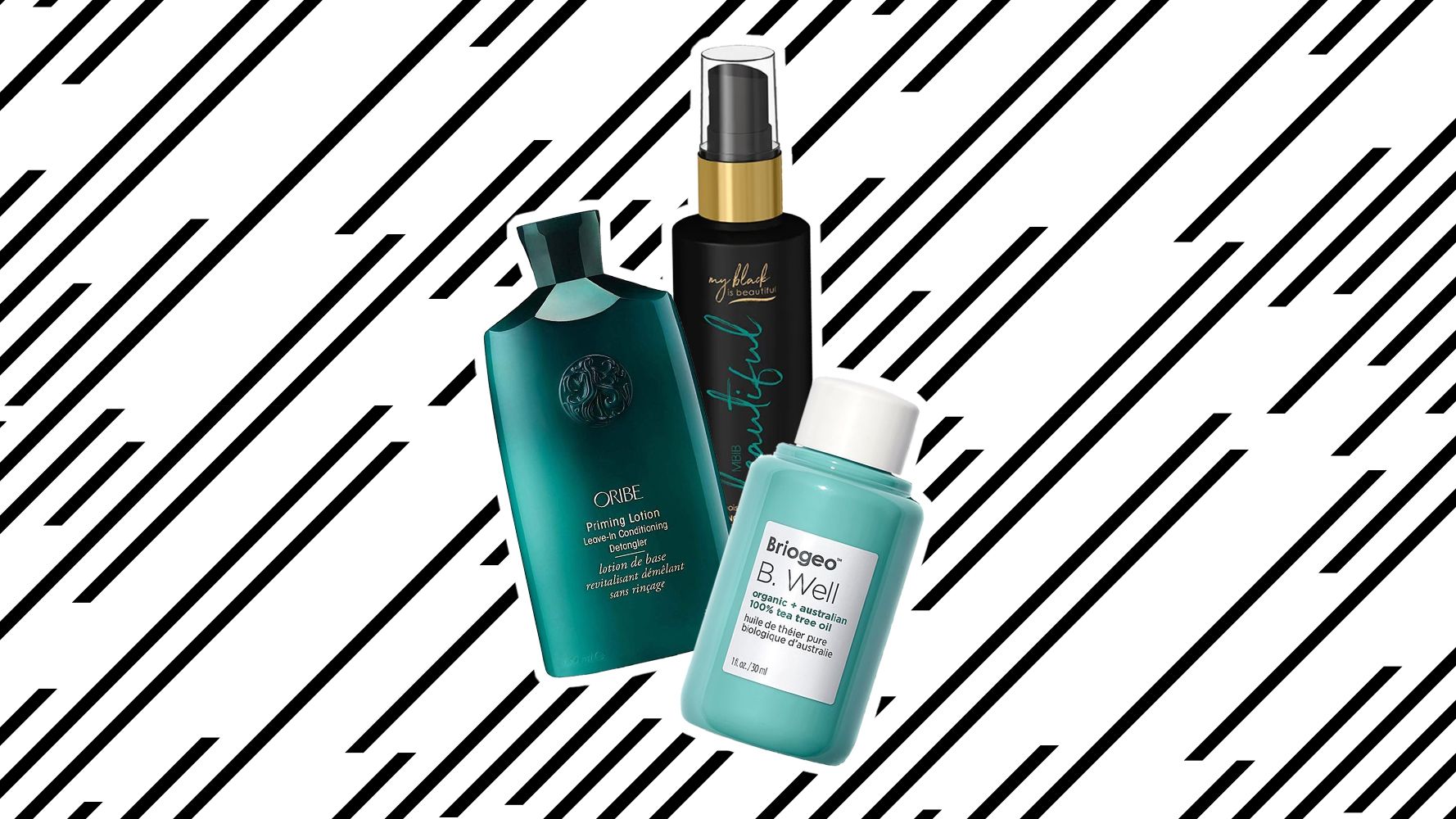

Tatjana Freund is a Beauty Commerce Writer, covering makeup, skincare, and haircare products and trends. She's a fan of vodka tonics and creepy Wikipedia pages.



